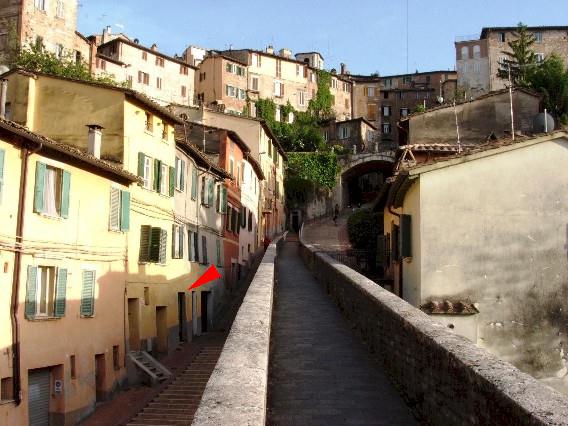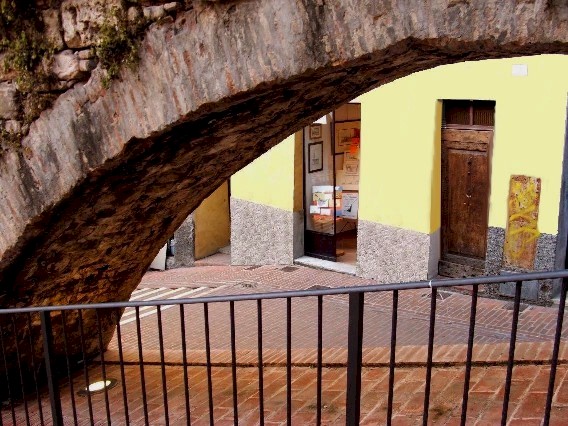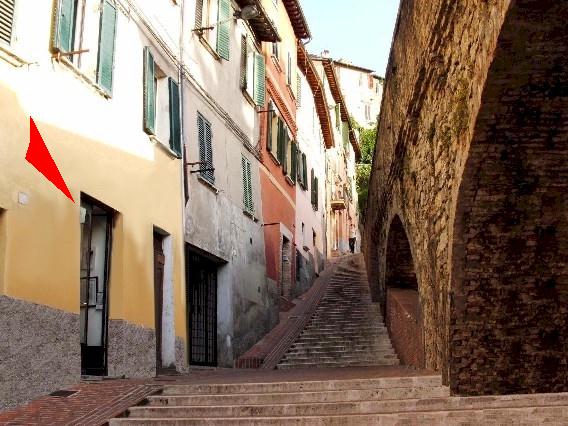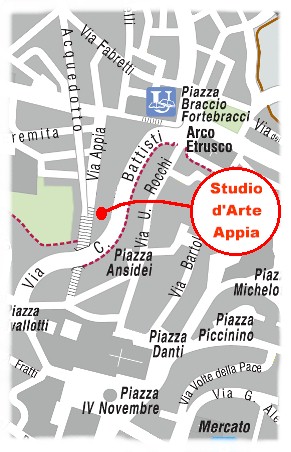WHERE
When I draw, I love to do it immersed in the heart of Perugia's historic center, in one of the most beautiful and evocative spots of this town: in the shadow of the Medieval Aqueduct.
In addition to the latter, the imposing Arco Etrusco, Palazzo Gallenga, home to the University for Foreigners, and the fascinating Roman mosaic of Via Santa Elisabetta, dating back to the second century. A.D., can also be viewed in the area.
Characterised by its wide arches, the medieval aqueduct runs along, but higher than, Via Appia, with which then rejoins through the long staircase that culminates under the arch of the same name (Arco dell'Acquedotto).
With the commencement of its construction works dating back to ca. 1254, the aqueduct is one of the first infrastructures of this kind from the medieval era. Designed to bring water from the nearby Monte Pacciano to the Fontana Maggiore in Piazza Grande (today's Piazza IV Novembre) with the only use of a 5 Kilometers-long forced conduct, it began to be operational in 1280, an extraordinary hydraulic engineering work for that time. It then remained unused from 1292 until 1322, due to some update works, and eventually permanently replaced in its job in 1897 by a newer conduct.
After its decommissioning, the structure, attributed to the Venetian architect Boninsegna, was then converted in order to be used as a pedestrian walkway over its last section, between Via Fabbretti and the Etruscan city walls, the purpose which still serves these days.
Today, the Medieval Aqueduct represents a very suggestive path that leads straight into the heart of the city, allowing you to walk through the roofs and tops of Perugia, passing over the Arco della Conca and then through the aforementioned Porta dell'Acquedotto.
A setting rich in local history and traditions, where you can still breathe the atmosphere of the crafts of the past.



